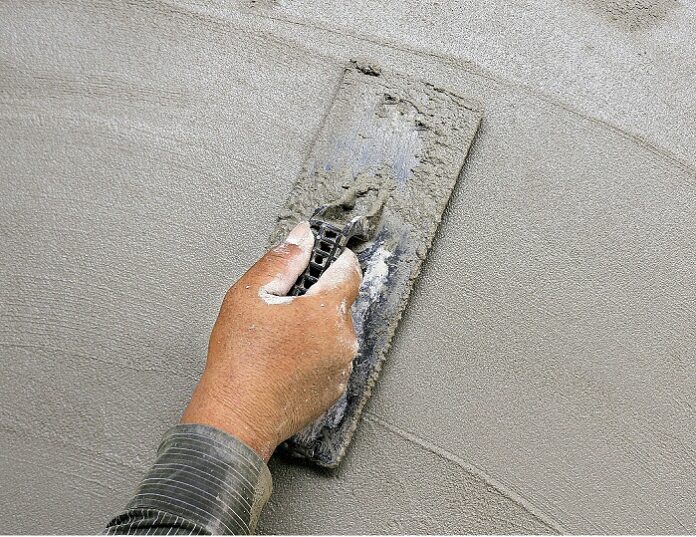When you’re building the house of your dreams, there are certain components that you think a lot about such as wall colors, furniture, door knobs, curtains, and whatnot.
However, we think very little about the less flashy parts — foundation and plastering work — even though they are what help you get the house you’d always wanted!
In this blog, we will take a look at every aspect of plastering work step-by-step. Let’s get started!
Plastering Work: What is It?
Construction projects require plastering work, which is essential. Over the brick masonry work, it serves as a damp-proof finish. Plastering also offers a solid, flat shiny texture over the brickwork, which improves the building’s aesthetic.
Apart from these, plastering work also has a few more functions. They are stated as follows:
- Protecting surfaces from the impact of weather changes
- Covering porous materials
- Leveling off uneven surfaces of blockwork or masonry work
- Creating a surface that is appropriate for painting
Indian Standards for Plastering Work
All the plastering material must pass the required tests before being utilized.
For instance, it is important to test sand for organic contaminants, silt concentration, particle size, and bulk. Since it must fall inside the boundaries of grading zone IV, river sand from a plane region is not appropriate for the building.
Here are some lists of components for plastering work that adheres to Indian standard rules:
| Material | BIS Code Standard |
| 43 grade OPC | IS 8112 Specification |
| Coarse and fine aggregates for natural sources for concrete | IS 383 Specification |
| 33 grade OPC | IS 269 Specification |
| Sand | IS 1542 Specifications |
| Integral cement waterproofing compound | IS 2645 Specifications |
| Portland Pozzolana Cement | IS 1489 Specification |
Pre-Requisites of Plastering Work
Before beginning the inside plastering process, the interior brickwork must be finished. The perimeter brickwork of each floor should be finished before beginning any exterior plastering work. Roof plaster should be done before beginning work on the walls since exterior plastering is always done from top to bottom of the structure.
Measurement of Plastering Materials
It is evaluated by area. The unit of plastering projects is measured in square meters. It is calculated by multiplying the wall surface’s length and height.
Example
| Thickness | C: M | Cement (kg) | Sand (m3) |
| 12mm | 1:3 | 7.5 | 0.015 |
| 20mm | 11.5 | 0.024 |
Precautions during Plastering Work
Preparing the Surface for Plastering
The surface must be adequately prepared before beginning any plastering work. The brick wall’s junction has to be properly racked out. Scraping and brushing should be used to get rid of loose mortar and dust. The surface should next be cleansed, thoroughly wetted, and properly dried before plastering may begin.
Sieving the Sand
Sand should be sieved through and cement mortar should be mixed as per the manufacturer’s instructions.
Preventing Cracks
To stop cracks, 150 mm wide chicken mesh needs to be placed between the wall and column/beam intersection. For fastening chicken mesh, use nails that are 150 mm apart.
Cement Coating
When speaking of cement coating, you’ll need about 1 kg per square meter. Two coatings are required for external plaster with an 18 mm thickness.
- First layer: 12 mm thick
- Second layer: 6 mm thick
To create a smooth surface, the surface should be trued up with a wooden float and trowel.
Conclusion: Taking Care of Plastered Walls
You might think that that was all about plastering work on your wall. But here’s the catch — you have to take care of the plastered wall. But worry not, we’re here to give you tips on that as well:
- After the job is finished, the floor area, doors, or door frames need to be cleaned.
- When the plaster has adequately solidified, curing should begin, and it must continue for a minimum of 7 days.
- The plaster must be left to cure for 24 hours before it may be removed.
FAQs
- What is the process of plastering?
Construction projects require plastering work, which is essential. Over the brick masonry work, it serves as a damp-proof finish. Plastering also offers a solid, flat shiny texture over the brickwork, which improves the building’s aesthetic.
- What is the purpose of plastering?
Plastering is primarily used for the following:
- Protecting surfaces from the impact of weather changes
- Covering porous materials
- Leveling off uneven surfaces of blockwork or masonry work
- Creating a surface that is appropriate for painting
- What is the cement-sand ratio in plastering?
In a mortar, the ratio of cement to sand is 1:5 (i.e., 1 part of cement to 5 parts of sand). Make sure that the materials used for plastering work adhere to the Indian standards set by BIS:
- Sand: IS 1542 Specifications
- Portland Pozzolana Cement: IS 1489 Specification
Plastering work should be at least 20 mm thick all together, comprising two layers.
Img Source : https://www.homebuilding.co.uk/advice/plastering-walls

